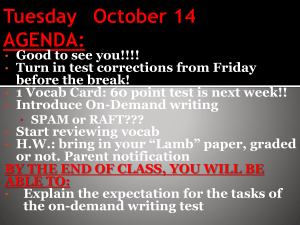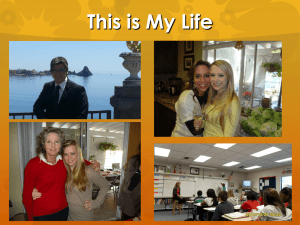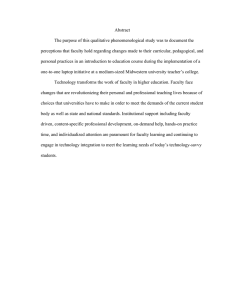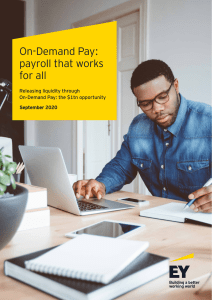The future of the media Kiev 15 November 2000 David Wood
advertisement
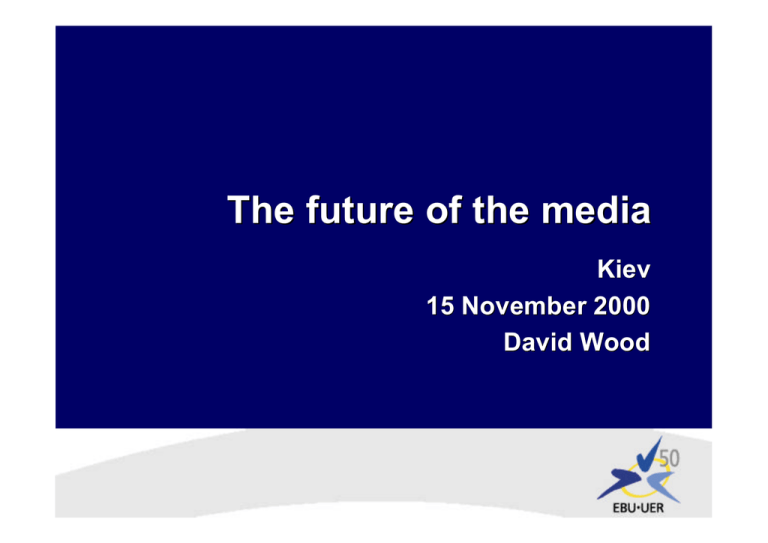
The future of the media Kiev 15 November 2000 David Wood The Art and Science of Prediction • there are a large number of variables, many inter-related, • so, multiple futures are possible; • “Chaos” theory can help “Chaos” Rules Include... • “Small” changes now can have dramatic consequences later (the signature of chaos) • Elements of order will emerge (strange attractors) Global attractors • Individualisation (services are provided for the individual, media is viewed alone, etc) • Globalisation (companies have a propensity to become multinational, until efficiency is stretched too far) The Shifting Paradigm Stage A Stage B Stage C Channel flows EPG/ Multichannel flows On demand The Shifting Paradigm • The “seasons” of the media will be three (A, B, C) • Timetables will be quite different in different places • The stages will overlap • There will be forces to retard and accelerate the shift What will be the time-scale? • How many generations will the shift take? • In Scandinavia today, 60% of young people’s electronic media time is taken up in Internet and video games • The time-scale may be more related to human nature than technology The Shifting Paradigm - interim solutions • Stage B can be made more Stage-Clike, by “client storage” • Stage C can be accelerated by “webcasting” Digital TV needed Pay TV services... TV CA Way in for signal Then we remembered multimedia... M H P TV CA Way in for signal Games.. ELECTRONIC PROGRAM GUIDE EPGs… • Use the multimedia capability of the receiver, • Become the anchor point for the viewer, • Takes over from the TV channel as focus of viewing And we now see we also need content information... TV Anytime project M e M TV t a d H a t P a Tools for TV Anytime CA Way in for signal Client storage • An on-demand environment is created in the receiver itself • Makes sense in the short term because of relative costs of storage and networks The traditional on-demand environment Server S (Programme supplier) Client C (Viewer) On-demand over a distance The TV Anytime environment S (Broadcaster) C (Viewer) On-demand in the receiver Webcasting • A broadcast environment is created by using multiple addresses • May work, but problem of availability of multicast routers today. The challenges in stage B • How to introduce new free-to-air technology to the public • How to cope with gatekeepers The evidence so far.. • All the very successful new digital broadcast systems have relied on pay-tv • There is no really successful stand alone free-to-air broadcasting yet • Can it be done? Market equilibrium Price supply demand Quantity Sorry, no sale! Price supply ? demand Quantity The Challenges.. • Can the free-to-air be made to work in the digital environment ? • Can the demand curve be raised enough by content? • Can the supply curve be lowered enough ? What broadcasters need to do.. • First, work out if you really have a business plan - this is not a given! • Evaluate your on-demand future • Build up know how in spectrum planning and economics The future is good... • We should try to help and encourage it to happen - the sooner it comes the better • But we must cater for legacies responsibly… • And don’t underestimate the work involved - start now The best way to make correct predictions about the future is to shape the future yourself Thank you for your attention wood@ebu.ch

